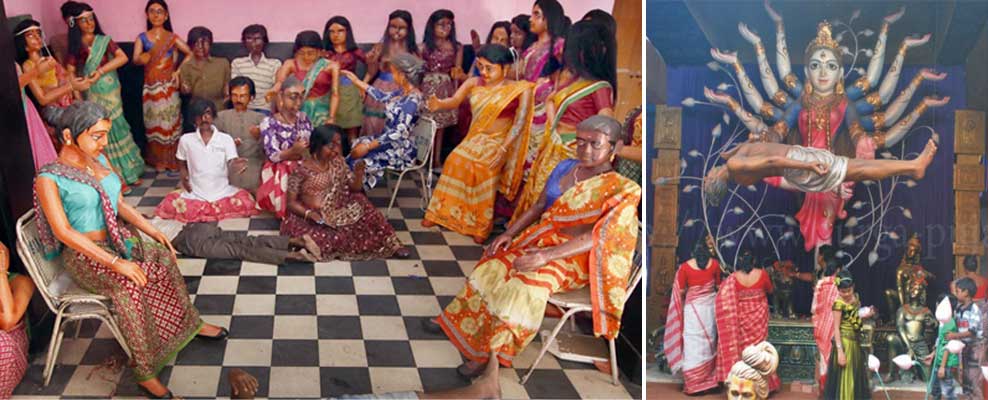What is it we seek as we set out pandal hopping? The devotional is one part of it, but while the daaker saaj Durga remains rooted in tradition, over the years, it is a surge of creative thought and out of the box ideation that is given newer meanings to what the deity represents. Traversing the city from the south to the north needed some amount of pre-planning, and that is how we could find some stunning gems of creativity, deeply researched and uniquely presented. The numbers put out are massive −28,000 pujas all over West Bengal, but the ones in the limelight are thematically high octane in their concepts, ideation and presentation.

The Chetla Agrani has been much awarded, not without reason. You first come upon a magnificent Rajasthani haveli, but that is just the outward manifestation. Inside, you walk through a maze of fetuses until you come upon a baori, a deep stepwell where you can sink your moksh and maya, and through a red-roped lattice, you see a black Devi. As you come out, you enter a marbled sheesh mahal, with intricate inlay work.
Munificence takes on different proportions at the other end of town, where the Sreebhumi Sporting Club gives you a recreation of the Chittor palace resembling the one picturized in the blockbuster film Padmaavat. Look closer and perhaps the Durga image is made somewhat like Rani Padmavati. She is attired in heavy gold jewelry courtesy Senco Gold.

The palatial rears up in other parts, too. Deshapriya Park with its Rajnandinir Rajmahal’ has been curated to represent four heritage sites from Gujarat, Maharashtra, West Bengal and Delhi.
But how can we forget the very clay that fashions the goddess? Suruchi Sangha, in New Alipore brings us back to earth, literally, with its total ambience that says: “Maa esechen maatir ghorey” − the Devi coming back to a mud hut. But how marvelously larger than life are the Bankura horse and the good luck Owl that dominate, while the music is calm and tuneful in keeping with the whole theme!

Nature and natural products make the Tridhara pandal on Mahanirban Road a model of environment-friendliness, with the use of jute and wood; Badamtala uses papier mache and newspapers; Shiv Mandir goes all out with bricks and coconut rope and coconut shells.
For sheer artistry, Bosepukur comes up trumps, as always, this time, focusing on tribal Gond art, and even adding a commercial touch by having actual tribals from that region selling their original art outside the pandal.
To behold a glittering pandal in a precious metal, you have to go to Santosh Mitra Square for its chariot made from 20 tons of silver, 60 feet high and 40 feet wide, drawn by horses.

And at Ahiritola, in north Kolkata, a recreation of a nineteenth century building with exposed brick, cheek by jowl with other “original” buildings, the exposed brick structure housing a traditional pratima.
Blends of tradition and new creativity, of deeply thought themes that joggle your intellect and pandals like Kumartuli Park that bring you a world devoid of conflict and instability, or the Chinese Wa community which has no documented history inspiring a puja in BJ Block with the theme ‘Aamader Mrinmoyee Ebare Chinmoyee’ or even Westminster brought to the fore, there is a never ending serendipity in the journey through Kolkata’s amazing pandals.
